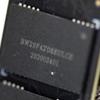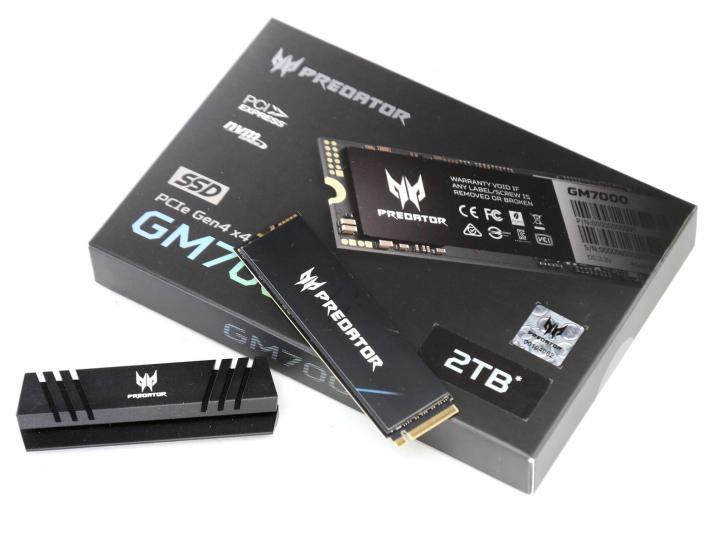Final Words & Conclusion
Final Words & Conclusion
ACER's GM7000 NVMe SSD is a formidable NVMe SSD; it truly is a powerhouse. The product is manufactured by Biwin, a company that has been manufacturing ODM and OEM products for an extended period of time. All factors appear to be correct; the NAND controller plays a significant role in the enchantment. The outcomes are frequently much superior to those found before with similar Phison-controlled devices. But you need to consider that ACER is using a completely different controller, the Innogrit 1G5236FAA. Innogrit is a new player and startup on the market that has only recently surfaced and was virtually unknown previous to this. The company was created in 2016 by a group of former Marvell employees whose views on the company's future appeared to be diametrically opposed to those of the company's management. Their efforts appear to have been fruitful, as the company announced its first products supporting PCIe 4.0 in the same year, formally demonstrated them in early 2020, and they have already began to appear on the market. Powered by InnoGrits' "Rainier" controller, the IG5236 controller tops and even outperforms the Phison PS5018-E18 controller on numerous fronts. Linear writes all continue at 6500MB/sec for nearly 32% of the drive. Yeah, each time we test a new generation or brand controller on an NVMe SSD, we are taken aback and amazed a little more.
Do we really need 7000MB/sec storage units?
In conclusion, breaking the 7 GB/sec level won't always make your gaming PC faster, and that is a fact. This is a high-performance product that requires heavy workloads to maximize. Your PC won't boot faster because your OS is the bottleneck, perhaps your games and apps will load faster than an NVMe SSD with read/write speeds of 7 GB/sec, but a split second remains a split second. This is the truth. But for those who buy a GeForce RTX 3090 or Radeon RX 6900 XT with a Core i9 or Ryzen 9 series processor, that final sniff of performance matters, whether realistic or not it makes a difference. However, new technologies like DirectStorage are on the way. This allows the graphics card to load textures directly from the SSD, freeing up processor cycles for other activities. On huge areas, they will be in the game in less than 5 seconds if they have a fast M.2 disk. Windows 11 will include this technology. Here fastest SSDs are going to make a difference.
Endurance
TLC NAND is used here and the rated values (by ACER) are 1200 TBW for the 2 TB version, that 600 TB written for the 1 TB model, and 300 GB written for the 512GB model. Based on a huge 50GB writes per day x 365 days per year you'd write 18.25 TB. 1280 TBW / 18.25 TB = 65 years of life and half that for the (33 years) for the 1 TB version.
Performance
The ACER Predator GM7000 is a product that is really quick. When it comes to real-world trace tests, this SSD is among the top three performers. Observed SSD bandwidth and access time (latency) is better than Phison as well, far lower than the industry standard of 41~50ms average. So its performing admirably. The overall linear read performance remains at ~7000 MB/sec, whereas the overall linear write performance remains at 5000–6400 MB/sec. Trace testing and IOPS performance both increase dramatically as a result of this. The fact that the write cache is large is something we appreciate. In our tests, we measured writes at approximately 6000 MB/sec for approximately 32 percent of the SSD volume, which amounts to 655 GB of full unthrottled write performance. That is something I've hardly seen before with a TLC-written device. Write performance drops to approximately 1 GB/sec once you cross that threshold (which is still very fast). Of course, if you give the SSD a chance to rest and let its pSLC buffer to complete its write-out, the speed immediately recovers to the 6 GB/sec threshold. However, in practice, who would really need to write half a terabyte either linearly or continuously. So, overall, it was a fantastic outcome.
Prices
- 512 GB - $ 119.99 = 23 cents/gb
- 1 TB - $ 179.99 = 18 cents/gb
- 2 TB - $ 349.99 = 17 cents/gb
Concluding
When I reflect back on this NVMe SSD, I'll remember how strong it remains in relation to its astonishing linear writes, which can maintain speeds approaching 6 GB/sec for such a long period of time. In all honesty, I'm blown away by what the Innogrit 1G5236FAA controller, when combined with the appropriate TLC NAND, can accomplish. In fact, the performance numbers are rather impressive and rival those of the Phison PS5018-E18 controller, which is a serious competitor. Although we've stated it before, you will not require 7 GB/sec SSD reading and this level of writing performance on your storage unit in the near future, with the exception of DirectStorage, and even then, you would only experience a benefit in rare and extreme instances. However, as with anything that is considered premium, if you really want it, you can get it if you work hard for it. It's also worth noting that the Rainier controller from Innogrit is a fantastic match for this SSD.
At 6 GB/sec on writes (linear) the SSD is a boss, it's among the fastest we have ever tested here. Please do seat the SSD under a mobo-supplied heatsink. While the controller and NAND did not run hot, a heatsink always prevents thermal throttling. Of course, to get the best out of it, you'll need a PCIe Gen 4 infrastructure, and at the time of writing, that means a compatible Ryzen processor on, say, a B550 or X570 chipset-based platform. In March 2021, Intel will start with PCIe gen 4.0 support as well. The Plextor M10P has sufficiently been buffered by a pseudo-SLC write cache and 1 GB of DRAM buffer for the 1TB model, 2GB for the 2 TB model. The unit makes you shiver in performance given the right conditions, and for the rest of them, you are down to high-end class NVMe performance on some workloads. NVMe protocol v1.4; this SSD is among the first to utilize the new NVMe 1.4 protocol. You do not need to install any new drivers; just make sure your OS is updated. Then install and format the SSD, and you're ready to go full throttle. Admittedly typically there are just two other names in the industry driving these PCIe Gen 4.0 SSDs, making all the reviews more or less the same. As such it is very refreshing to have tested a product with the new Innogrit 1G5236FAA controller. And kudos to that company as they have delivered a product that can compete with the best.
ACER backs its storage unit with a five-year warranty / or 1200 TBW in the case of the 2 TB model. One question remains: will there ever be a real-world need equivalent to this degree of performance? This is a response that is only applicable to end-users who wish to purchase it. The good news is that as performance improves, things will accelerate in both the low-end and mainstream markets. Consider this: 3 GB/sec NVMe SSDs are rapidly becoming the industry standard and are currently widely available; contemplate this for a second. It is simply remarkable how well this SSD performs, and it performs much better when used in conjunction with suitable workloads (stunning). In this, the sixth test in a series of examinations of the PCIe Gen 4.0-based devices capable of 7 GB/sec throughput, we have not been disappointed even a little bit. Two thumbs up, and gosh, what an outstanding read and write performance; on all fronts. Highly recommended if you can locate one at a reasonable price.
Recommended Downloads



